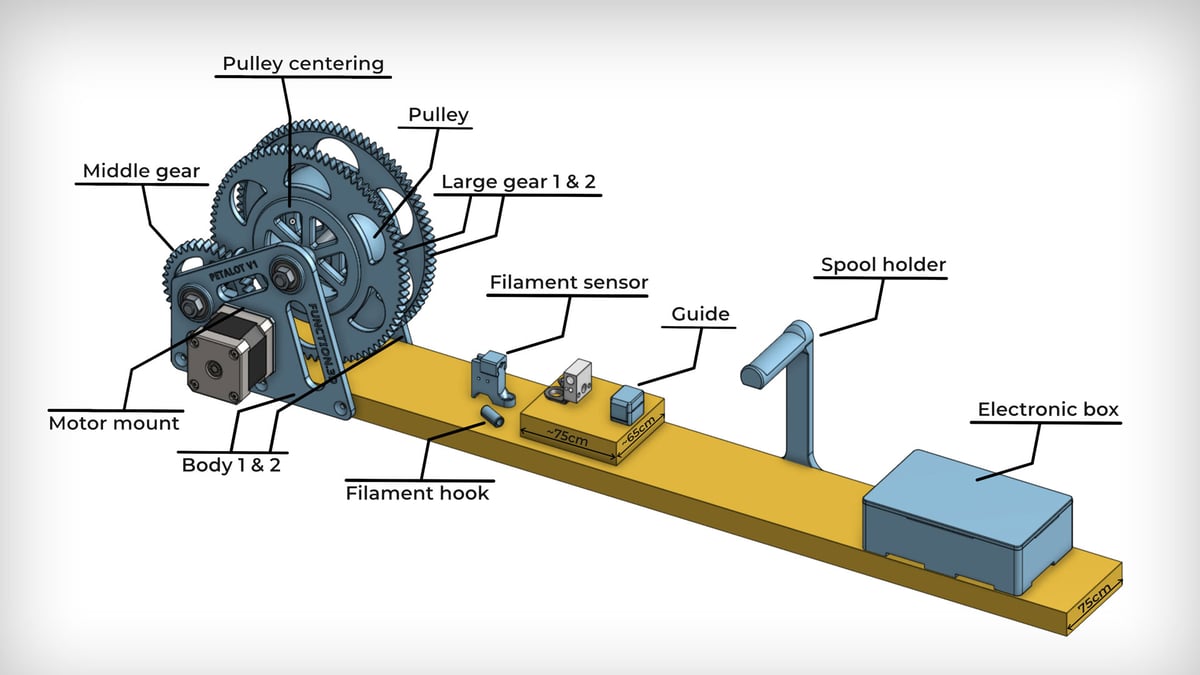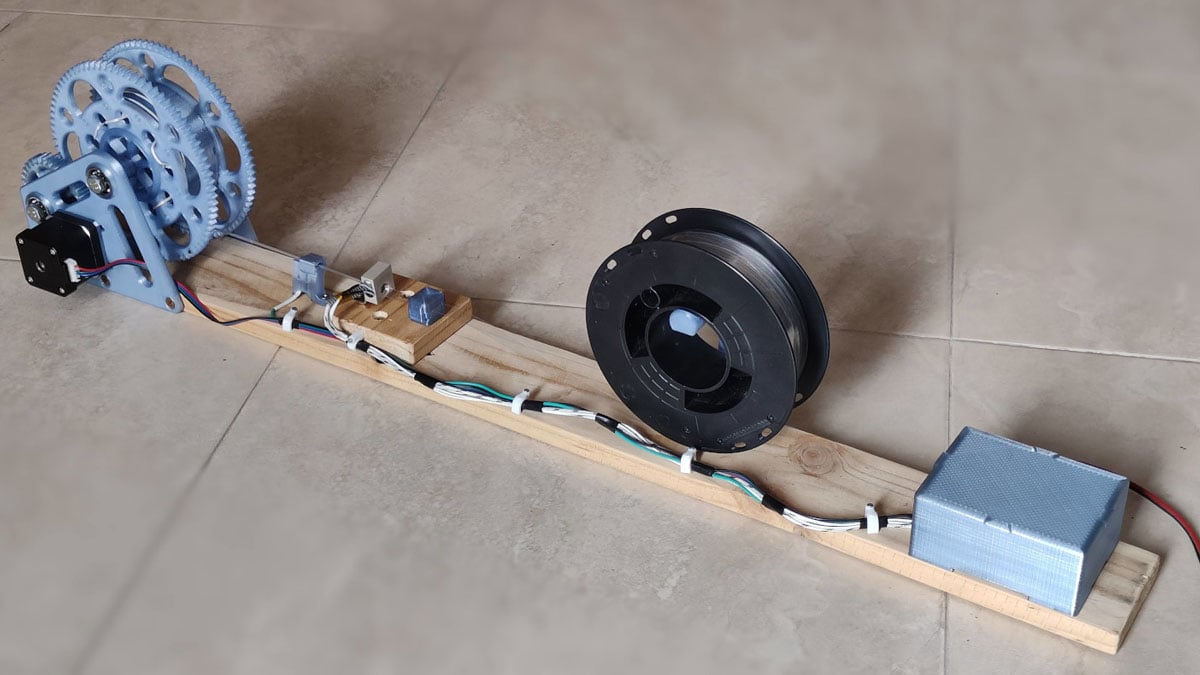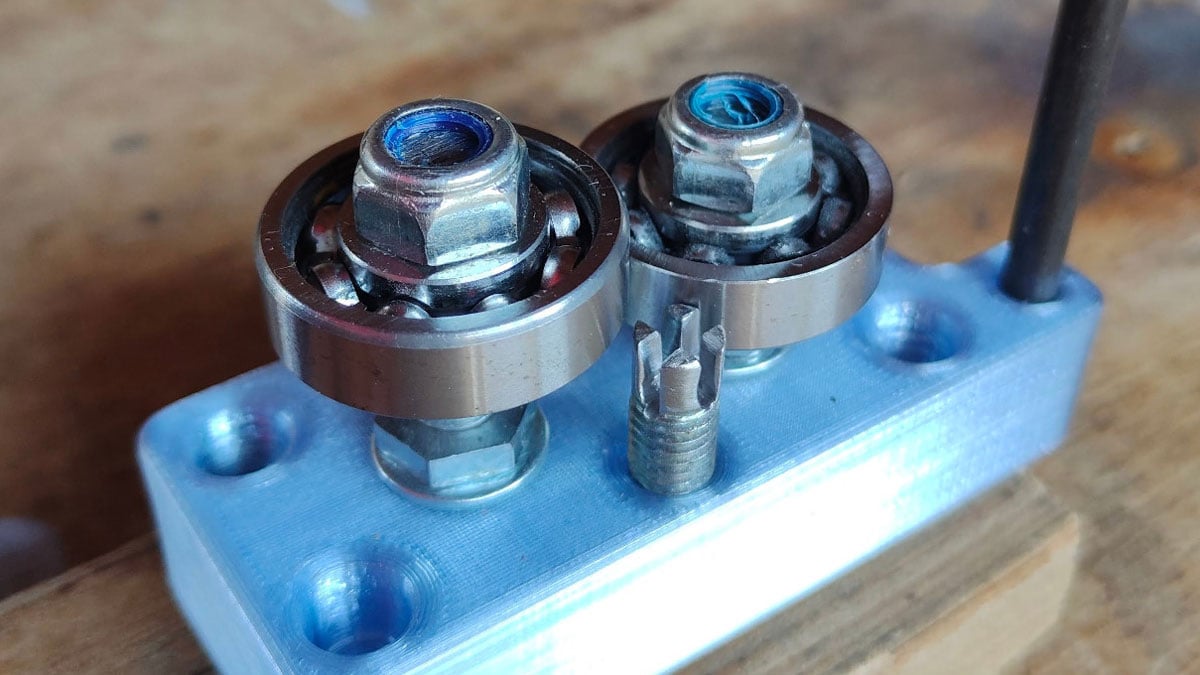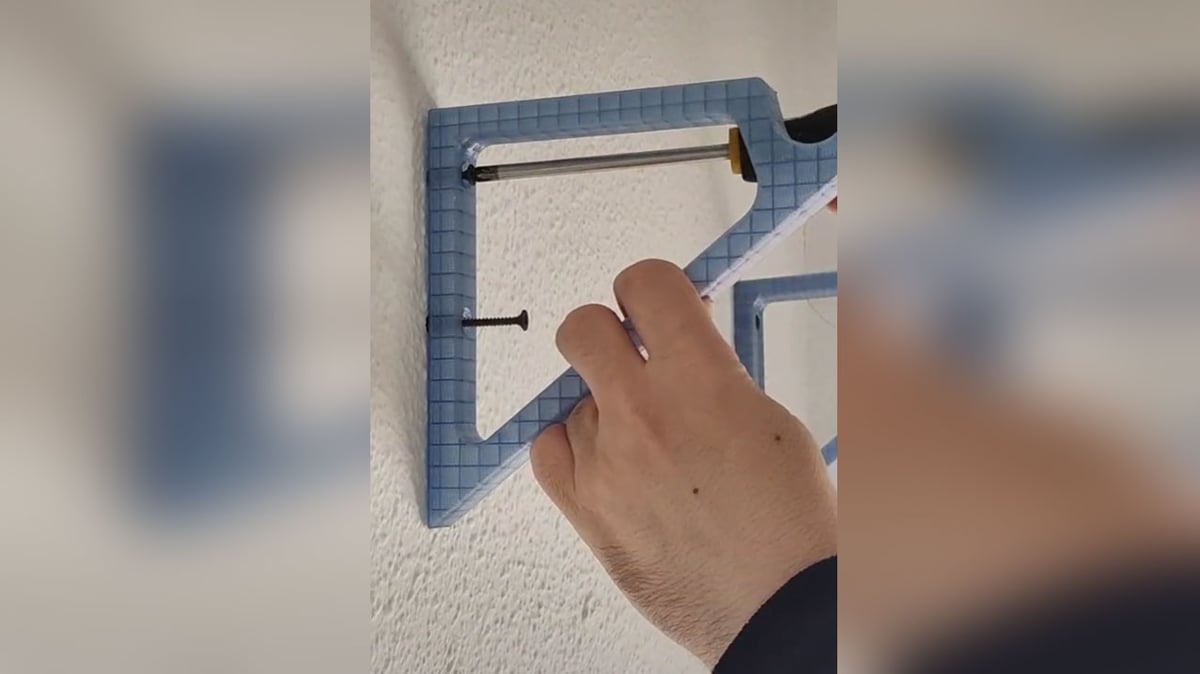Many of the plastic bottles we come into contact with are made of PET (polyethylene terephthalate), a thermoplastic polymer. There’s no doubt it’s a useful manufacturing material, but it takes around 450 years to decompose and introduces harmful microplastics into the water table in the process. If you want to play a small part in reducing the amount of plastic going to landfill, the Petalot project gives you a set of tools to recycle these bottles into 3D printing filament.
3D printing filament is made through a process of extrusion. Molten plastic is forced through a small opening called a die, to create a filament that is then cooled and wound onto a spool.
Petalot works using much the same process. An old 3D printer hot end is modified to make a die, and a plastic bottle cutter and filament winder sit either side of it. It’s all powered by a PC power supply, and can be made from easy-to-find hardware, reclaimed materials (such as old wood palette), and some 3D printed bits, the designs of which you can get for free.



PET filament yielded from bottles can be processed by a Creality Ender 3, as shown in a demo video on TikTok. PET can be a challenging 3D printing material to work with as it’s prone to warping, but with adequate adhesion and a properly leveled bed, it can produce parts with good rigidity.


Raul is also quick to point out that the ideas, designs, plans, electronics, and firmware are not new ideas: they’re “recycled” from other similar projects out there. It’s also made clear the system still requires a decent amount of skill to use, which will take time, effort, and experience to get right.
In terms of power usage, the entire setup will use a maximum of 60 W. Plans are released under a personal non commercial license, and everything is designed in OnShape (a browser-based CAD application that works on all platforms including Linux). You can find all the design files on LinkTree, and there’s a TikTok playlist detailing the entire build.
Plastic disposal is an enduring problem today, and the Petalot project offers a way to curb it – ever so slightly.
Open Source Tip Offs
Have you seen a noteworthy open source 3D printing project? Tip us off @all3dp on Twitter or by mail at editors@all3dp.com, and we’ll consider covering them.
You’ve read that, now read these:
Lead image source: Mali Maeder via Pexels
License: The text of "The Petalot PET Bottle Recycling System: A Closer Look" by All3DP is licensed under a Creative Commons Attribution 4.0 International License.